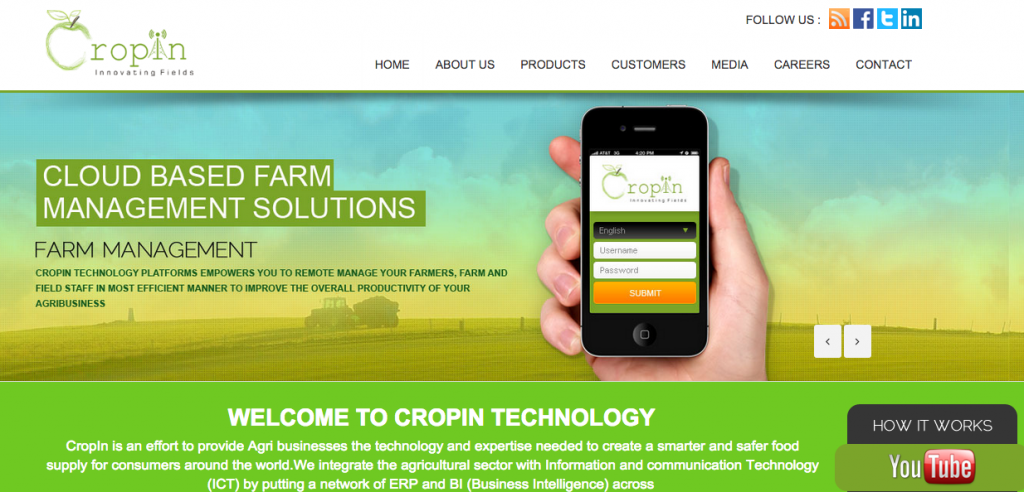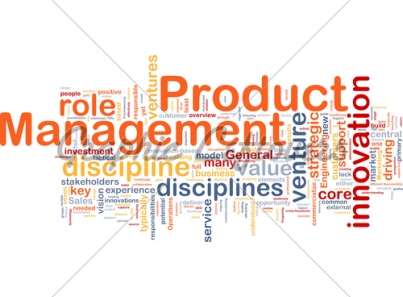Cropin Technologies are one of the leading players in the niche and emerging agribusiness startups. Krishna Kumar, CEO of Cropin shares his journey and perspectives with Product Nation in this discussion. Read on…
You are among a niche set of startups that have focused on agribusiness opportunities. Could you provide an overview of your organization – what you do, whom do you cater?
Cropin is our effort to leverage the advances in Information Technology (IT) and apply it on the agribusiness sector. Over the years, we have successfully created an efficient and safer food supply chain for consumers around the world, by putting a network of ERP and BI solutions that different stakeholders of the agriculture supply chain use and update on a regular basis. This has ensured that all participants of the process get visibility of activities in near real time basis – which in turn has ensured superior quality and safety of food for end consumers.
 You started your career with an MNC company. What prompted you to start Cropin? Did your work experience help you after you set up Cropin?
You started your career with an MNC company. What prompted you to start Cropin? Did your work experience help you after you set up Cropin?
I started to work for GE after my graduation. I was doing very well at my job, I got recognized for coming up with new solutions that had market impact. To groom me further, GE put me on a very niche leadership training program that spanned over 2 years – which provided me well rounded skills related to new business development, financials etc. These aspects helped me get equipped with the basic skills needed to manage businesses across the lifecycle.
While this was going on, some developments about farmers suicide and people throwing tomatoes on the road for lack of viable price made me sit up and take notice of their plight. I started to think deeply on if anything could be done to alleviate – even partially, these issues of farmers. I soon realized that information asymmetry caused most of these problems to all stakeholders involved in agriculture. This led to a thought of creating a platform where all key stakeholders – the buyers of produce, farmers and other involved institutions could interact seamlessly and transparently.
Can you describe some of your early experiences as you setup Cropin? What worked, and what did not work?
At the very beginning, the idea I had was to make every farm traceable – and I thought that once this was achieved, all stakeholders interested in that piece of the farm land could easily collaborate. However, after spending 6 months dabbling with this idea – I realized that this business model was not sustainable – primarily because the farmers, who are the key stakeholders in this supply chain simply could not afford to pay us the amounts that were required to sustain the tracking and tracing capabilities of their farms. So, the next logical step was to sell the idea of traceability of farms to companies who procured regularly from farmers. This pivot in our business model really worked, and we were able to provide a host of benefits to not only the buyers (companies), but also to the farmers, in a sustainable way.
Most procurers of agricultural produce are large companies. How did you go about acquiring customers?
You are right, in that we had to sell this idea of traceability of farms to large companies. As we started, we had identified a few farms in the vicinity of Bangalore, from where I had heard these sad stories of farmers’ plight. When we started working there with a few farmers, we noticed that Safal was actively procuring produce from the farmers in that vicinity. So, we approached Safal and offered to help them out. With a lot of coaxing and hard selling, they finally agreed for a free pilot which we ran for about 6 months. These 6 months gave us so much learning and insight about the core issues that every stakeholder faces in the supply chain. Although Safal later did not continue the pilot, nor did they provide us business, they helped us identify the key issues that needed to be solved.
Armed with this knowledge, we slowly started approaching other major procurers. Fieldfresh (a joint venture between Bharti and Belmonte) bought into our story and initially asked us to monitor a very tiny portion of the land that they engaged with. Once we executed beyond their expectations, we increased our business with them by over 20 times their initial order. While we were working with these initial customers, we also got a good push from CNBC Young Turk Program – who made a story on what we were attempting – and this had created some goodwill amongst the CEOs of top companies engaged in this business.
Although going beyond these initial customers was difficult, I was persistent in my attempts to reach out to key decision makers in companies such as Maccain, Mahindra, Kancor, Technico, etc. Over multiple discussions and meetings with them, I was able to convince them that our startup would provide them the value that eluded them hitherto, and that we were competent to understand the nuances of the business that we were in. These efforts resulted in us signing up virtually all the large companies that operate out of India in the food produce procurement space. Of course, as we dealt with each company, we also learned about specific needs that our solution did not cater to – and over time, we were able to make our solution robust and feature rich – without compromising on usability, to cater to these needs.
The other key aspect is that all along, I have been able to get the buy-in of key seed and angel investors who have believed in the capabilities and potential of our team and the solution. This has helped me to scale our operations rapidly from managing 6 acres in 2010 to managing more than 40000 acres by 2013 – across 14 states of our country and now looking to expand our operations in other emerging markets across the world.
Tell us about the key capabilities of your solution that has resulted in such large scale embracement of customers. What are your plans to enhance these capabilities in the future?
I can describe the benefits of usage of our solution in terms of the different stakeholders who use our product. For farmers who grow the produce under a contract to the buyers, the benefit is real time advice from agricultural experts from across the world on any unknown/unforeseen development that hinders their crops. This ensures that they get the assured price for their crops. For buyers and procurement offices of these large companies, our solution helps to plan and forecast their procurement, provides 360 degree view of every detail of status of agricultural produce at any farm land under contract. We provide a variety of alerts that they can track and mitigate risk of fall in output.
The other key USP of our solution is the ease of use of the capabilities. Since our solution is cloud based and is rendered on cell phones, farmers can easily use voice or video to communicate and collaborate with experts to report or to seek input on an issue. They can talk in their local language or better still, upload a picture taken from their cell phone to explain the issue at hand. On the other end, the procurement officials find mobility of the solution a great aid in efficiently managing their tasks. I can confidently state that we are the first ones in the world to provide visibility to the most granular level possible in the agribusiness supply chain thus far.
Looking ahead, we are trying out various experiments to improve different aspects of our tracing capabilities. Our focus always has been to use the cutting edge technology for the benefit of our customers. We are using Big data and analytics to create next generation agriculture practices and inteligent systems which keep learning from the past. In this regard, we are evaluating usage of Google Glass for information capture and reporting capabilities. We are also toying with UAVs to evaluate whether we can map the areas under cultivation more effectively.
All these sound very exciting! For the benefit of fellow product entrepreneurs who are targeting Indian market, tell us three things that you have done right thus far.
First and foremost, identify who in the customer organization is the decision maker on engaging with you. Once you identify the customer stakeholder, engage continuously till closure of the deal. Enterprise customers take a long time to close a deal – so persistence is key.
Second – ensure that your work gets noticed to the right audience and beyond. I spent a good amount of time in marketing our efforts through various channels – television, news magazines and others. We were covered extensively by most coveted programs such as the Times Now News story, CNBC-TV18’s Young Turks, Fortune Magazine and by other leading national business dailies. These activities provided legitimacy and the right visibility and helped us talk to the CXOs of the enterprise companies, who otherwise would have thought twice to engage with a young company such as ours.
Third one is about building a strong core team that will help scale the company. I have been fortunate to have Kunal(Founder) and Jena(Co-Founder) join me in 2011 and 2012 respectively as part of the core team. They complement my efforts and have provided the right ingredients for our company to progress forward. We also have a great set of advisors and investors who we use as a sounding board to validate our moves. All of these, in my mind are the things done right thus far!.


